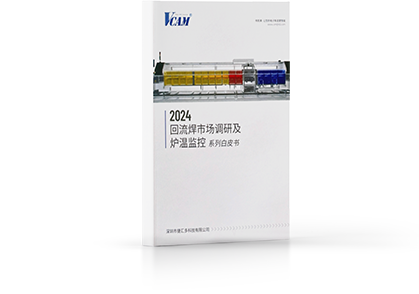Which is better for cleaning: dry ice or plasma?

Dry ice cleaning is mainly a physical method to clean stubborn stains, burrs, rosin, furnace surfaces, etc.
Plasma is mainly a chemical method, and physics plays an auxiliary role, activating the surface of the object, increasing the surface energy, and enhancing the surface adhesion.
What is the probability of electronic components on the PCBA board being broken down?

Factors that affect static electricity: height, speed; our static electricity can be as low as 3V, or even lower. We need to confirm whether there are components that are sensitive to static electricity and the requirements for the water drop angle. The requirements for each board are different, and we can support test proofing;
When do I need to change parts and spray guns? How much is maintenance?

What may need to be replaced are the nozzle and electrode on the spray gun. If the power is set below 600W, it can be used for 1 year. The lower the power, the longer it can be used. In extreme cases (800-1000W), it can be used for 6 months.
Residue? Exhaust remove? Contamination? Bottom particles? Clean how often?

There is no residue in the chemical reaction part. The main reaction between plasma and stains is to generate gases, such as carbon dioxide, carbon monoxide, ozone, nitric oxide, etc., which are directly sucked away by strong suction. If the surface of the customer's product is indeed dusty and stained, it is best to wipe off the surface residue first, or wash it with water before using plasma cleaning.
Which industries are suitable for automatic solder paste dispenser?

The automatic solder paste dispenser device is mainly suitable for **electronic manufacturing industry** that requires high precision, high efficiency, high consistency and reduced waste, especially in the field involving surface mount technology (SMT). The following are some of the main applicable industries:
1. SMT electronic assembly industry (core application):
Consumer electronics: mass production of smartphones, tablets, laptops, TVs, game consoles, wearable devices, etc. Automatic adding reduces downtime and improves efficiency.
Communication equipment: routers, switches, base station equipment, optical modules, etc. High requirements for reliability and consistency.
Computers and servers: motherboards, graphics cards, memory bars, server motherboards, etc. High component density and strict requirements for printing accuracy.
Automotive electronics: engine control unit (ECU), infotainment system, sensor, ADAS system, etc. Requires extremely high reliability and quality consistency, and often involves small batch and multi-variety production, automatically adding reduces line change waste.
Industrial control and automation equipment: PLC, industrial computer, robot controller, instrumentation, etc. Usually involves small and medium batch and multi-variety production, automatic adding can be flexibly adapted.
Medical electronics: medical imaging equipment, monitors, diagnostic equipment, implantable devices, etc. The cleanliness, precision and reliability requirements are extremely high, and automatic addition reduces manual intervention and contamination risks.
Aerospace and defense electronics: avionics systems, radars, communications equipment, etc. The highest level of reliability and consistency is required, and production verification is strict, and reducing waste is important.
LED lighting: LED display modules, driver boards for LED lighting fixtures, etc. Especially large-size LED screens require uniform solder paste coverage.
2. Electronic Manufacturing Service Providers (EMS):
Factories that provide foundry services for all of the above industries. They serve many customers, have a wide range of products, and change lines frequently. Automatic solder paste addition devices are essential for them to reduce material waste (especially when changing lines), improve equipment utilization, reduce labor costs, and ensure consistent printing quality between different products.
3. Semiconductor packaging (partial applications):
Solder paste printing may also be used in some advanced packaging technologies (such as flip chip and wafer-level packaging). Automatic dosing devices are also suitable for these high-precision, high-value production environments to reduce expensive solder paste waste.
Why do these industries need automatic solder paste dosing devices?
Reduce waste: Significantly reduce the oxidation and hardening waste of solder paste in the printing gap (especially when changing lines and stopping), saving expensive material costs.
Improve yield and consistency: Ensure that the amount of solder paste on the steel screen of the printing machine is always in the best state, and reduce printing defects caused by insufficient solder paste or state changes (insufficient solder, missing prints, pull tips, etc.).
Improve equipment utilization rate: Reduce downtime caused by manual addition of solder paste and achieve longer continuous production.
Reduce labor costs and dependence: Automation replaces frequent manual addition operations, reducing manual intervention and potential operating errors.
Improve the working environment: Reduce the chance of manual contact with solder paste, and better meet industrial hygiene and ESD protection requirements.
Adapt to high-mix production: For production lines With frequent product switching, automatic addition can quickly adapt to the subtle requirements of different products for solder paste quantity and state, and reduce line change losses.
Improve precision requirements: With the miniaturization of electronic products (such as 0201, 01005 components), high density (fine pitch BGA, QFN) and the application of new solder pastes (such as low temperature solder paste), the control requirements for the solder paste printing process are getting higher and higher, and automatic addition is an important link to ensure stability.
In summary, the automatic solder paste adding device is an inevitable choice for the modern electronic manufacturing industry to pursue automation, intelligence, high quality, high efficiency and high cost-effectiveness. It is especially suitable for SMT production lines, covering a wide range of fields with high reliability requirements from consumer electronics to automobiles, medical, military and other industries. With the development of the electronics industry, its application scope is still expanding.
Which industries are suitable for SMT oven profiler?

The core function of the SMT oven profiler (also known as the reflow soldering/wave soldering temperature curve tester) is to accurately measure and record the actual temperature change over time in the soldering furnace during the electronic assembly process. Therefore, its application scope is mainly concentrated in the industry of electronic soldering process that requires precise temperature control.
VCAM is a professional thermometer manufacturer, and its products have been sold and applied to many Fortune 500 companies. Thermometers are widely used in the following industries:
1. Electronic Manufacturing Services and Contract Manufacturing:**
This is the most core application area. Any factory that performs SMT (surface mount technology) and through patches-hole insertion (THT), regardless of size, needs to use an oven temperature tester to establish, verify and monitor the temperature curve of the reflow soldering furnace, wave soldering furnace, and selective soldering furnace to ensure the quality of soldering (reduce false soldering, cold soldering, tombstoning, thermal damage to components, etc.).
2. Consumer Electronics:
The circuit board manufacturing of almost all consumer electronic products such as mobile phones, tablets, laptops, TVs, game consoles, smart watches, headphones, and home appliance control boards require precise soldering temperature control.
3. Automotive electronics:
The automotive industry has extremely high requirements for the reliability and safety of electronic products. PCB assembly of key components such as engine control units, body control modules, infotainment systems, sensors, ADAS systems, etc. must be strictly tested for furnace temperature to meet automotive industry standards.
4. Industrial control and automation:
The working environment of circuit boards in industrial equipment such as PLC, inverters, servo drives, HMI, industrial computers, sensors, instruments, etc. may be relatively harsh, and the requirements for welding reliability are also very high.
5. Communication equipment:
The core board manufacturing of communication and network equipment such as base station equipment, routers, switches, optical modules, servers, etc. requires high-precision welding and temperature monitoring.
6. Medical electronic equipment:
Medical equipment (such as monitors, imaging equipment, diagnostic equipment, implantable devices) has extremely strict requirements for the reliability and safety of electronic components. Furnace temperature testing is a key step to ensure welding quality and components from thermal damage, and must comply with medical industry regulations.
7. Aerospace and defense electronics:
Aircraft avionics systems, satellite communication equipment, radar, military communication equipment, etc. have the highest requirements for the reliability and extreme environment resistance of electronic products. Oven temperature testing is an essential means to ensure welding quality and long-term reliability, and must meet strict industry standards.
8. LED lighting:
The driver power board and LED module board of high-power LED lamps need to consider heat dissipation and thermal stress during welding, and furnace temperature testing helps optimize the process.
9. Computers and servers:
Manufacturing of core components such as motherboards, graphics cards, memory bars, storage devices, and server motherboards.
10. New energy (photovoltaic, energy storage):
Manufacturing of control boards and power boards for power electronic equipment such as photovoltaic inverters and battery management systems.
In summary, as long as an industry involves the use of reflow ovens, wave soldering ovens, selective soldering ovens or other similar thermal processing equipment for the welding and assembly of electronic components (SMT and/or THT), then the SMT furnace temperature tester is an indispensable process monitoring and quality assurance tool in the production process of the industry. It is a key equipment to ensure welding yield, product reliability and compliance with relevant industry standards.
How to choose a suitable oxygen concentration analyzer?

1. Identify application scenarios and core requirements
Application purpose: Why do you measure oxygen?
Measured gas: What are the main components? What are the possible interfering components in the background gas? Temperature and pressure range of the gas?
2. Determine key performance parameters
Range, accuracy, resolution, response time, stability
3. Select the appropriate measurement principle (core technology)
4. Consider installation, sampling and interface
Installation method:
In-situ: The sensor is directly inserted into the process pipeline or container (such as zirconium oxide, some lasers, some fluorescent probes). Advantages: Fastest response, no sampling lag. Disadvantages: Need to consider process temperature and pressure, installation interface, and maintenance convenience.
Extraction: Extract gas to the analyzer (electrochemical, paramagnetic, partial fluorescence, laser) through a sampling pump and pipeline. Advantages: The analyzer can be installed in a more friendly environment and is easy to maintain. Disadvantages: There is sampling lag, the sample gas needs to be processed (filtered, dehumidified, cooled), and the sampling system needs to be maintained.
Diffusion type: Gas natural diffusion contact sensor (portable safety instrument, some fixed electrochemical). Simple structure, no pump, but slow response, affected by ambient airflow.
Sampling system (required for extraction):
5. Maintenance and calibration requirements
6. Regulations and certification
7. Budget and total cost of ownership
In a non-dust-free environment, how long can the surface last from cleaning to the next process?

How long the water drop angle is maintained is related to the humidity and oxygen content in the environment. Oxygen will form a film on the surface of the product and be oxidized. Different substances are oxidized at different speeds, so the maintenance effect depends on the different materials. It is recommended to proceed to the next step directly after cleaning. If it really needs to be placed, it can be placed in a nitrogen cabinet.
Why don't reflow manufacturers adopt RCMK performance testing across the board?

1. When the reflow oven manufacturer tests itself, it uses a large aluminum plate to deploy the temperature measurement points. The temperature uniformity of the test itself is within 1°C. The actual aluminum plate has good temperature uniformity performance, and the reflow oven manufacturer basically does not need to debug to pass; however, the modules of RCMK are completely separate and independent. Each module is tested separately for the temperature curves of the left, middle and right. The test results will not be so good, especially the temperature of the module close to the fixed track will be slightly lower than that of the middle module; in addition to the conventional temperature uniformity performance test, RCMK also introduced balance test, thermal shock analysis, hot air volume change rate analysis, thermal efficiency analysis, and empty and full load thermal compensation capacity comparison analysis. These newly added analysis items may expose some weaknesses of the reflow oven. As a reflow oven manufacturer, it is definitely more exclusive. It is precisely because RCMK can test some undiscovered weaknesses
2. The cost of using the detector is also a factor that needs to be considered. The furnace temperature detector needs to be calibrated, maintained, and replaced regularly, which will increase the operating cost of the furnace manufacturer. Therefore, the furnace manufacturer may choose whether to fully adopt the furnace temperature detector based on market demand and cost-effectiveness.
3. As customers' application scenarios for reflow oven testing become more and more abundant, furnace manufacturers will gradually pay more attention to it, and the application of furnace manufacturers will gradually improve.
Does temperature compensation affect reflow oven test results? How to check and fix the oven?

The reflow itself is set with temperature compensation. The test results may not be accurate because the principle and method of temperature compensation may not be consistent with the principle and method of the test instrument, resulting in deviations in the measurement results.
In order to improve the accuracy and reliability of the test, how should the reflow be repaired and debugged? Generally speaking, you can refer to the following steps:
1. Turn off the temperature compensation function of the reflow, or set the temperature compensation value to zero so that the temperature measurement of the furnace is not affected by the compensation.
2. Use standard temperature sensors and test instruments to measure the temperature inside the reflow and record the temperature values and temperature curves at different positions.
3. Compare the measurement results with the display results of the reflow's temperature control system, sensors, data recorders and other equipment to analyze the cause and size of the error.
4. According to the error situation, calibrate, adjust or replace the reflow's temperature control system, sensors, data recorders and other equipment to make them consistent with the measurement results of the test instrument.
5. Repeat the above steps until the temperature measurement results of the reflow and the measurement results of the test instrument reach a certain accuracy and stability.
——It takes multiple tests before application. First test the original temperature and parameters, then test the parameters after temperature compensation setting, and then do the actual application.

Professional thermal engineering monitoring solutions make temperature control simple and efficient
Contact us to let our solutions help you
































